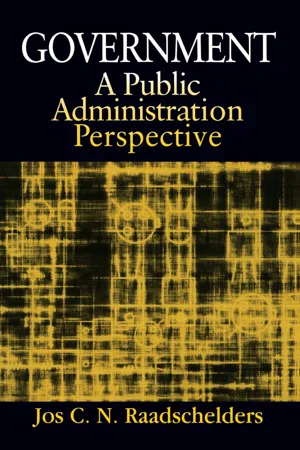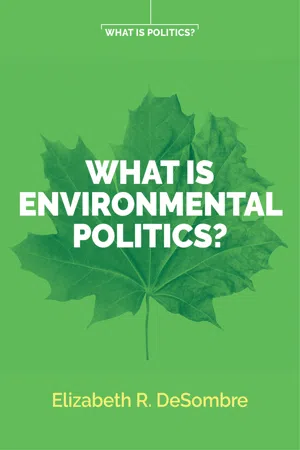Social Sciences
Forms of Government
Forms of government refer to the various systems by which a country or community is organized and governed. Common forms include democracy, monarchy, dictatorship, and oligarchy, each with distinct structures and decision-making processes. These forms shape the distribution of power, the role of citizens, and the overall functioning of the political system.
Written by Perlego with AI-assistance
Related key terms
4 Key excerpts on "Forms of Government"
- eBook - ePub
Democracy and Dictatorship
The Nature and Limits of State Power
- Norberto Bobbio(Author)
- 2017(Publication Date)
- Polity(Publisher)
4Democracy and DictatorshipDEMOCRACY IN THE THEORY OF GOVERNMENTAL FORMS
Since the classical age, the term ‘democracy’ has always been used to designate one of the Forms of Government, or rather one of the various ways in which political power can be exercised. Specifically, it designates that form of government in which political power is exercised by the people. In the history of political theory, a discussion of the characteristics, the merits and the defects of democracy is to be found in the theory and typology of governmental forms. Consequently, no account of democracy can avoid stating the relationship between democracy and other Forms of Government, because only in this way can its specific character be described. In other words, as the concept of democracy belongs to a system of concepts constituting the theory of governmental forms, it can only be understood in relation to the other concepts of the system which it helps to define and is in turn defined by. A division of approaches to the concept of democracy can be made by placing it in the larger conceptual network of the theory of governmental forms and noting the various uses to which this has been put at different times and by different authors. The following three uses exist: the descriptive (or systematic), the evaluative (or axiological) and the historical. In its descriptive or systematic use, a theory of governmental forms consists of the classification and typology of historically existing Forms of Government carried out on the basis of shared and distinguished characteristics, similar to the operation in botany which classifies plants and in zoology which classifies animals. In its evaluative or axiological use, a theory of governmental forms consists of a series of value judgements in which different constitutions are not merely compared to each other, but ranked as one is judged good and the other bad, one excellent and the other terrible, one better than, or not so bad, as the other, and so on. Finally, it is possible to speak of a historical use of the theory of governmental forms when it serves not just to classify different constitutions, and not only to recommend one over another, but also to describe the different stages of historical development as a series of necessary transitions from one form to another. When, as often happens, the evaluative and historical uses are joined together, the description of the different historical stages becomes a theory of progress or decline, depending on whether the best form is at the beginning or end of the cycle. - eBook - ePub
- Stewart R Clegg, David Courpasson, Nelson Phillips(Authors)
- 2006(Publication Date)
- SAGE Publications Ltd(Publisher)
11 Power and Organizational Forms Chapter outline In this chapter we will: Situate the concept of power in the current and former debates about bureaucracy and the dynamics of bureaucracies. Explain the political dimensions of organizational forms, by introducing democracy and oligarchy as two major power regimes, and by presenting a model of analyzing political performance. Suggest the current social construction of specific hybrid political forms, encompassing contestation and coercive forms of power. Introduction The purpose of this chapter is to examine the direct relevance of organizational power to the stability of political regimes of organizations, which we propose to define as the political performance of organizations. The idea is to suggest that theories of organization power can help us understand the dynamics of organizational forms and, what is more, that organizational dynamics are fundamentally political. In the second part of the chapter we illuminate how organizational power operates to generate hybrid political structures that we encompass in the polyarchic model. We posit polyarchy as the most enduring contemporary political form. Organizational form and power: the political performance of organizations Situating bureaucracy Weber (1947) made the case for rational-legal bureaucracy as a bulwark against the blandishments of patrimonial power and privilege. The argument is familiar. Classical liberal bureaucracy, conceived on a rational-legal basis, stood for an ethos of service to the public, through conformance to certain means, rather than the arbitrary treatment of people according to caste, status or resources. Rational-legal bureaucracy presumed democratic ideals, rule without regard for persons, and was intended as an abstract ideal as well as the basis for empirical description - eBook - ePub
Government: A Public Administration Perspective
A Public Administration Perspective
- Jos C. N. Raadschelders(Author)
- 2015(Publication Date)
- Routledge(Publisher)
1 GOVERNMENT: THE MOST CENTRAL SOCIAL PHENOMENON OF OUR TIMEYou can fool all the people some of the time, and some of the people all the time, but you cannot fool all the people all of the time .—Abraham Lincoln, 1858—Robert Denhardt, 1984The difference between a good manager and an extraordinary manager lies not in one’s technical skills, but in one’s sense of one’s self and one’s surroundings, a sense that can only be derived through thoughtful reflection, through theory.Government and governance are as old as the human race. Every society that we know of through records had rulers, whatever their titles. At an abstract level, government is inherent to society. It is a constant in society. At a more concrete level, however, nothing about governance and government is constant. Society is always in flux, so styles of governing must change. The institutional arrangements for governance are a reflection of the dominant worldview(s), of the dominant theories about the interaction between citizen and government, and of the dominant ideas about organizational structures and processes. In short, government is a reflection of what is valued by its environment.In the first section of this introduction, I consider the nature of contemporary government, and especially the fact that while government is bound by culture, it can be studied through more “universal” concepts. Given that government is always in flux, I briefly discuss what is new about government by means of a two-tiered approach to historical time: comparing contemporary government with that of 100 years ago, and comparing government of the late modern era (i.e., the twentieth century) to that of the early modern era (before the late eighteenth century) (section 1.2 ). This approach helps us understand why the study of government proliferated across the entire spectrum of the social sciences in the twentieth century (section 1.3 ). In section 1.4 , I explore attempts to link knowledge about government and the integrative role that the study of Public Administration1 can play in that endeavor. The conclusions of section 1.4 serve as the basis for the framework of this study, which is presented in section 1.5 . In section 1.6 , I outline the structure of the book, and in section 1.7 - eBook - ePub
- Elizabeth R. DeSombre(Author)
- 2020(Publication Date)
- Polity(Publisher)
CHAPTER 3Political StructuresExamining the politics of the environment requires an understanding of the types of governing structures within which political decisions are made. Rather than examining the political processes of any one specific country, this chapter looks at the different types of political structures within states and the implications they have for political decision-making about environmental issues, with examples drawn from different countries that have those political structures. If politics is about navigating competing social preferences, then the context in which societies argue or compromise about these decisions, and the rules those contexts impose, should influence the political outcomes.A first-cut distinction is the difference between democracies and authoritarian (or other forms of non-democratic) regimes. Although it might seem obvious that democratic states would have better environmental records, both the theoretical framework and the empirical evidence are somewhat more mixed. This chapter examines the theory and empirics suggesting the environmental advantages and difficulties of each broad political type. Democracies may be more likely to reflect the interest their populations have for a cleaner environment, but their political processes can be contentious and slow. Authoritarian governments may be less likely to be concerned about environmental issues overall, but when they decide to act they have the ability to make swift change: witness the ability of China just before the 2008 Beijing Olympics to suspend the operation of factories and dramatically curtail traffic, with significant environmental benefits (reductions of sulfur dioxide emissions by 60 percent and of carbon monoxide and nitrogen dioxide by nearly 50 percent),1
Learn about this page
Index pages curate the most relevant extracts from our library of academic textbooks. They’ve been created using an in-house natural language model (NLM), each adding context and meaning to key research topics.



